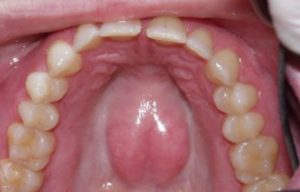 Did you know that many people have a hard time going to the dentist?
Did you know that many people have a hard time going to the dentist?
Some people get so anxious that they don’t even end up going when they really need to i.e. are in a lot of pain.
No one should feel bad if they have anxiety about going to the dentist, or in fact anxiety in any other aspects of their life.
Anxiety is a normal emotion, but as far as dental procedures are concerned, when a person is too anxious, it may be best to consider some sort of strategy in order to ‘take the edge off.’
For this reason we should consider some sort of sedation.
What Is Sedation Dentistry?
We do what we need to do in order to help people who are anxious, get through a dental procedure.
When dealing with such issues as anxiety and fear, there are different pharmacological agents that can place the patient into varying degrees of sedation…whatever level of sedation is needed or desired.
These act by depressing certain receptors in the patient’s nervous system.
Different Types of Sedation
The pharmaceutical agents that we use and the sedation technique that we decide upon will depend on the level of anxiety of the patient and the procedure to be done.
We hope to use the lowest level of sedation in order to get the desired effect. There is a risk with each type of sedation, so why not keep it to a minimum?
Let’s Look at a Few Methods of Sedating a Patient
Orally: Via a pill, such as Ativan
The patient takes this (under their tongue) about an hour before their appointment (in the office).
It is used in conjunction with traditional freezing, but due to the medication, the patient doesn’t mind the freezing as much.
Inhalation (Laughing gas /Sweet air / Nitrous Oxide)
Again, this is used in conjunction with traditional freezing.
A mask is placed over the patient’s nose and they focus on breathing this special type of air: It smells sweet, so it is commonly known as ‘sweet air.’
This ‘air’ takes the edge off so that the patient doesn’t mind going through the actual procedure.
It is an easily reversible procedure and the patient leaves the office in the same ‘state’ that they came in.
Intravenous
This is a direct entry system into the patient’s blood stream which allows for an immediate effect.
Different states of sedation can be achieved via this route, depending on how much is needed.
This method achieves a greater level of sedation than number one and two above. The patient is in a dissociated state and has little or no memory of the appointment.
General Anaesthetic
The patient is intubated and completely put under.
Reasons To Sedate a Patient
- Anxious people who fear going to the dentist (needles / past traumatic experience).
- People with a gag reflex.
- Patients who have a lot of dental work to be done in one sitting. This avoids them having to go through many visits, especially if they have difficulty keeping their mouths open i.e. T.M.J issues (see blog “What causes T.M.D, posted on October 23, 2011).
- Small children who have multiple cavities and also behavioral issues.
So if you have anxiety about going to the dentist, take heart…There are ways to address your anxiety!







